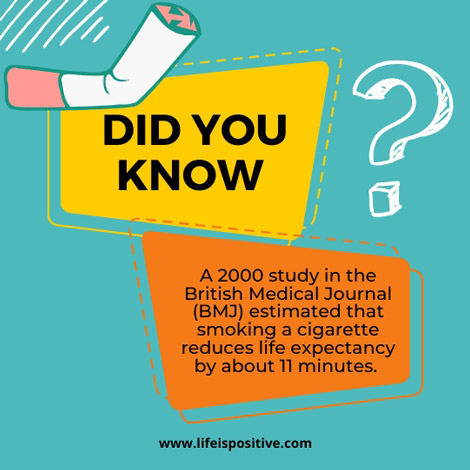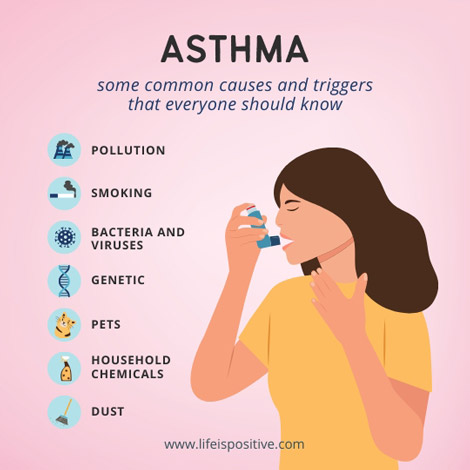|
Getting your Trinity Audio player ready...
|
Second-hand smoke—it’s something we all know is bad, but how bad is it really? Whether you’re walking down the street, chilling at a café, or sitting at a family gathering, second-hand smoke is sneaky, lingering, and often unavoidable.
But what many don’t realize is that exposure to second-hand smoke can impact more than just your lungs—it can affect your health in ways you might not even expect.
From asthma flare-ups to long-term respiratory issues, second-hand smoke doesn’t just harm smokers; it’s a serious health risk for everyone around. Ready to learn more about this hidden danger? Let’s dive in!
What is Second-Hand Smoke?
Second-hand smoke is the smoke you breathe in when you’re around someone who is smoking. It doesn’t matter if it’s a cigarette, cigar, vape, or pipe – the smoke that wafts into the air and the smoke exhaled by the smoker both contribute to second-hand smoke.
This smoke is more than just an unpleasant smell; it’s a toxic mix of over 7,000 chemicals. Among these, hundreds are toxic, and about 70 can cause cancer.
You might think that being outdoors or in a well-ventilated area reduces the risk, but second-hand smoke can linger in the air long after the cigarette has been put out.
This means that even brief exposure can still be harmful. For non-smokers, especially children, pregnant women, and people with asthma or other respiratory conditions, second-hand smoke is a serious health concern.
Why is Second-Hand Smoke Dangerous?
Second-hand smoke is dangerous because it contains a toxic cocktail of chemicals that can cause a range of health problems.
Here are some of the harmful substances found in second-hand smoke:
• Nicotine: An addictive substance that can affect brain development in children.
• Carbon Monoxide: A poisonous gas that reduces the amount of oxygen in the blood.
• Formaldehyde: A chemical used to preserve dead bodies, which can cause cancer.
• Benzene: Found in gasoline, benzene is a known carcinogen.
• Ammonia: Commonly used in cleaning products, ammonia can irritate the eyes and lungs.
Read: 10 Dangers of Vaping You Need To Know
Health Effects of Second-Hand Smoke
1. Immediate Effects
Exposure to second-hand smoke can have immediate effects on your health. For instance, it can cause:
• Eye, nose, and throat irritation: Even a short exposure can make your eyes water and your throat scratchy.
• Respiratory problems: You might start coughing, wheezing, or feeling short of breath.
• Asthma attacks: If you have asthma, second-hand smoke can trigger severe attacks, making it hard to breathe.
Read: Top 10 Ways To Be The Change You Want To See In The World
2. Long-Term Effects
The long-term effects of second-hand smoke are even more concerning. Prolonged exposure can lead to:
• Lung Cancer: Non-smokers exposed to second-hand smoke have a higher risk of developing lung cancer.
• Heart Disease: Breathing in second-hand smoke can damage your heart and blood vessels, increasing the risk of heart attacks.
• Chronic Obstructive Pulmonary Disease (COPD): This group of diseases, including emphysema and chronic bronchitis, makes it hard to breathe.
• Stroke: The risk of stroke is higher for non-smokers who are regularly exposed to second-hand smoke.
Impact on Children and Pregnant Women
Children and pregnant women are particularly vulnerable to the effects of second-hand smoke. Here’s why:
Children
• Sudden Infant Death Syndrome (SIDS): Babies exposed to second-hand smoke are at a higher risk of SIDS.
• Respiratory Infections: Children who breathe in second-hand smoke are more likely to suffer from bronchitis and pneumonia.
• Asthma: Kids exposed to second-hand smoke are more likely to develop asthma and have more severe attacks if they already have asthma.
• Ear Infections: Second-hand smoke can cause fluid build-up in the middle ear, leading to painful infections and potential hearing loss.
Pregnant Women
• Low Birth Weight: Pregnant women exposed to second-hand smoke are more likely to give birth to babies with low birth weight, which can lead to health complications.
• Preterm Birth: Exposure increases the risk of giving birth prematurely, which can result in developmental issues and long-term health problems for the baby.
• Birth Defects: There is a higher risk of birth defects, such as cleft lip or cleft palate, in babies born to mothers who were exposed to second-hand smoke during pregnancy.
Read: How Birth Order Can Shape Your Personality
How Does Second-Hand Smoke Affect Asthma?
Asthma is a chronic condition that inflames and narrows the airways, causing breathing difficulties. When non-smokers, particularly children, inhale second-hand smoke, their respiratory systems can be severely affected.
The toxins in second-hand smoke can cause inflammation and increased mucus production, which are primary triggers for asthma attacks.
Moreover, infants and young children are more susceptible because their lungs are still developing. Studies show that children exposed to second-hand smoke are more likely to develop asthma at a young age.
Additionally, their lung function can be permanently reduced, making them more vulnerable to respiratory infections and chronic obstructive pulmonary disease (COPD) later in life.
Generational Impact: The New Findings
The idea that second-hand smoke can affect not just those directly exposed but also future generations is a newer and alarming discovery.
Research has shown that the effects of second-hand smoke can cause genetic changes.
These genetic alterations can then be passed on to the next generation, increasing their risk of developing asthma and other respiratory conditions.
For instance, a study conducted by researchers at the University of Southern California found that children whose grandmothers smoked during pregnancy had a higher incidence of asthma, even if their mothers did not smoke.
This suggests that second-hand smoke exposure can have lasting genetic effects, making it a generational health concern.
Protecting Yourself and Your Loved Ones
Given the serious health risks, it’s important to take steps to protect yourself and your family from second-hand smoke. Here are some practical tips:
• Make Your Home Smoke-Free: Ensure no one smokes inside your home. Encourage smokers to go outside and stay away from windows and doors.
• Choose Smoke-Free Public Places: Support and visit places that enforce smoke-free policies.
• Educate Others: Share information about the dangers of second-hand smoke with family and friends, encouraging them to smoke in designated areas away from non-smokers.
• Use Air Purifiers: While not a complete solution, high-quality air purifiers can help reduce indoor air pollution.
Final Thoughts On Second-Hand Smoke
The link between second-hand smoke and generational asthma risk is a big deal. It’s not just about protecting ourselves but also thinking about the next generations.
Second-hand smoke isn’t just an immediate threat; it can have long-lasting effects that span generations. This makes it more important than ever to avoid exposure and create smoke-free environments.
By staying informed and taking action, we can make a significant difference in the health of our families.
So, next time you see someone lighting up, remember the hidden dangers of second-hand smoke and take steps to protect yourself and those you love.
Let’s work together to ensure a healthier, smoke-free future for everyone.
For more empowering content, connect with our vibrant community here ➡️ Social Media.



